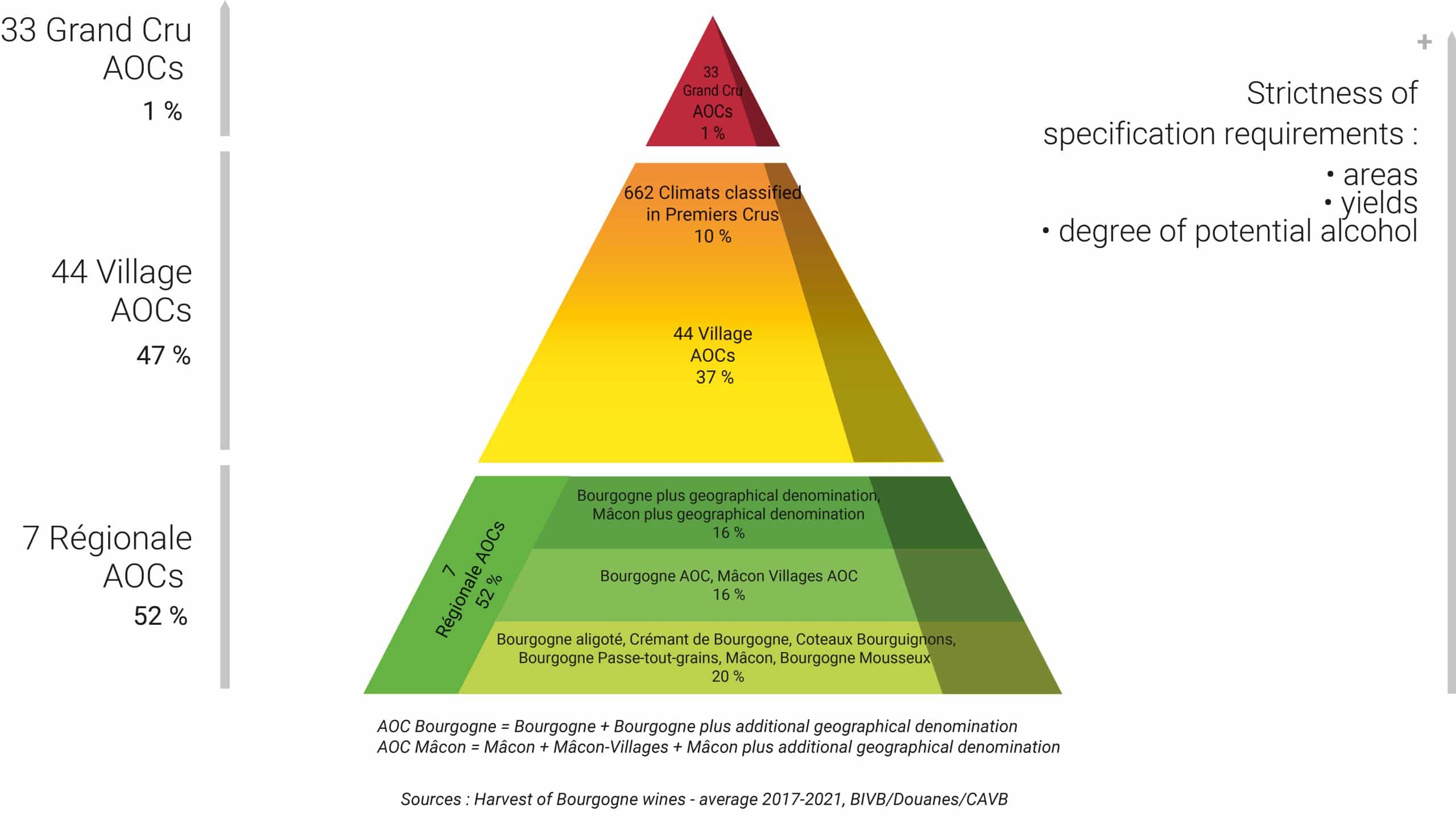Introduction to Burgundy’s wine classification: A legacy of 1855
In the pivotal year of 1855, Bordeaux and Burgundy each embarked on distinct yet influential journeys in the world of wine classification. While Bordeaux classified its premier chateaux, Burgundy, less acknowledged for this historic feat, witnessed Lavalle publishing his detailed Plan Topographique of Burgundy’s Côte d’Or. This comprehensive map meticulously graded vineyards from Santenay to Dijon, introducing categories like Tête de Cuvée, Première, Deuxième, and Troisième Cuvée.
This groundbreaking work laid the foundation for the appellation contrôlée system in 1936, dividing Burgundy’s vineyards into over 400 distinct appellations. Today, this hierarchical arrangement spans from grand cru to premier cru, village wine, and generic Bourgogne, illustrating the region’s commitment to terroir-driven winemaking.

Unraveling the Burgundian Wine Classification System
Officially Introduced in 1936 the classification draws a lot of the old mapping and many nuances exist and some actual legends such as why certain premier cru were not Grand Cru and why entire villages don’t have Grand Cru – Some suggested to review the Crus.

- Grand Cru:
At the zenith of Burgundy’s wine hierarchy, Grand Crus are powerful, complex wines crafted from the region’s top climats. With 33 Grand Crus in the Côte d’Or, these wines showcase the pinnacle of Pinot Noir and Chardonnay. Grand Crus constitutes a mere 1% of Burgundy’s overall production, emphasizing exclusivity and cellaring potential.
- Premier Cru:
Premier Cru wines hail from special climats within a village, often neighboring Grand Cru sites. Recognized as exceptional growing locations, these wines display the words “Appellation 1er cru contrôlée” on their labels. With 640 Premier Cru climats, these wines account for 10% of Burgundy’s total production, embodying a level of distinction just below the Grand Crus.
- Village Wines:
Grapes cultivated in specific villages or communes result in Village Wines. Notable villages like Beaune, Givry, Nuits-St-Georges, and Pouilly-Fuissé are recognizable on labels. A total of 44 villages contribute to 37% of Burgundy’s production, offering a broad spectrum of terroirs within this category.
- Regional Wines:
The broadest category, Regional Wines, encompasses grapes grown anywhere in Burgundy. Labels specify “Bourgogne Blanc” or “Bourgogne Rouge,” depending on the grape variety. Representing the majority at 52% of the overall production, these wines provide an accessible entry into Burgundy’s diverse terroirs.
As we navigate through Burgundy’s appellations, we unveil a legacy that balances exclusivity with accessibility, showcasing the region’s commitment to quality and diversity.

One thing is for certain that limited areas of production, high level of interest globally pushes producers to use the highest level of attention to detail to their Premier Crus and Grand Crus and we are most confident in the work done by the wineries that we are working closely with in the region.
Burgundy is essential for wine enthusiasts. Our dedicated buyers are always on the lookout to uncover extraordinary wines for our members.
Discover the world’s finest wines with Crurated’s exclusive membership. Access rare allocations, secure storage, and personalized wine concierge services. Join today the elite club of discerning wine enthusiasts.
